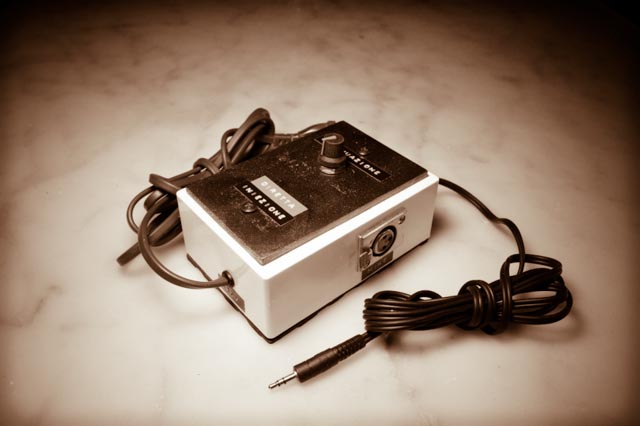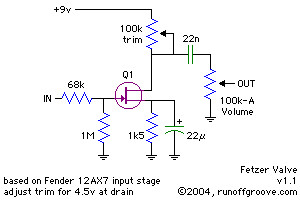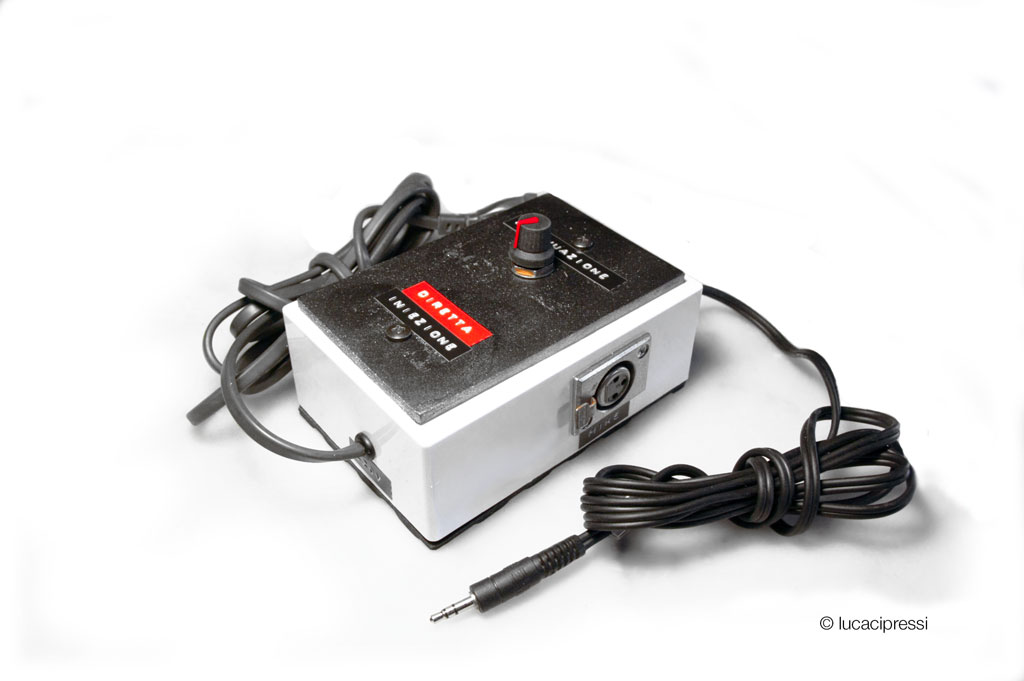
Diretta Iniezione
DI Box
A handcrafted direct injection box — a compact, AC-powered audio preamplifier designed for dynamic microphones, capable of cleanly converting mic-level signals to standard line-level output (-10dBV).
Features:
- Class A FET input stage with high linearity and extended bandwidth
- XLR input with adjustable gain
- Balanced or unbalanced line-level output
- Low noise, low distortion performance
- Wide frequency response
🎙️ Motivation & Design Approach
While trying to record audio using a Shure SM58 dynamic microphone directly into a Mac’s line-in jack, I encountered the usual issues: low gain, poor signal-to-noise ratio, and uninspiring tone. So, I decided to build my own solution — a clean, simple preamplifier with tone characteristics I personally enjoy.
The input stage is modeled after the classic 12AX7 triode front-end found in vintage Fender amplifiers — but implemented here with a JFET, taking advantage of its tube-like character, low-noise performance, and analog simplicity. No USB or digital interference: the unit is powered by a noiseless internal AC supply, intentionally avoiding computer-induced hum.
🔌 Input Stage: FET vs. Triode
In terms of behavior, the FET booster circuit is functionally very close to a triode: both operate in Class A, both shape their transconductance via negative feedback, and both offer a pleasing analog response curve.

To emulate this sound, I based my design loosely on the well-known Fetzer Valve preamp, originally conceived for guitar pedals but easily adapted to microphone-level signals.
I tested a few JFETs from my stash — 2SK30 and 2N5457 — and settled on the 2N5457 for its smooth response and availability. The circuit runs at 18V, giving a large headroom and excellent dynamic range.
📈 Testing & Waveform Results
Using a -20 dBu sine wave (1 kHz), AC-coupled into the DI box, the output wave looks very stable and distortion-free at full volume.

Switching to a live capture using the Shure SM58 in front of the Mac’s internal speaker (playing the same tone), we observe minor distortion — expected, given the poor acoustic source and uncontrolled conditions.

A small DC offset was observed during biasing, later traced to a faulty trimmer in the bias voltage divider.
Nonetheless, the resulting voice recordings are crisp, warm, and have an analog texture that I find very pleasant.
🎧 Audio Sample
Want to hear how it sounds? Here’s a short voice recording using this DI box:
🎙️ Listen on Vimeo
🔬 Future Experiment: Cascode Configuration
For the next iteration, I’m considering a cascode configuration using dual FETs or FET + BJT to further increase gain and linearity.


🛠️ Final Assembly

The entire build fits in a compact metal enclosure, with XLR input and standard jack outputs. Simple, effective, analog.
If you’re looking for a reliable mic-to-line converter with vintage character — this little Diretta Iniezione box just might do the trick.